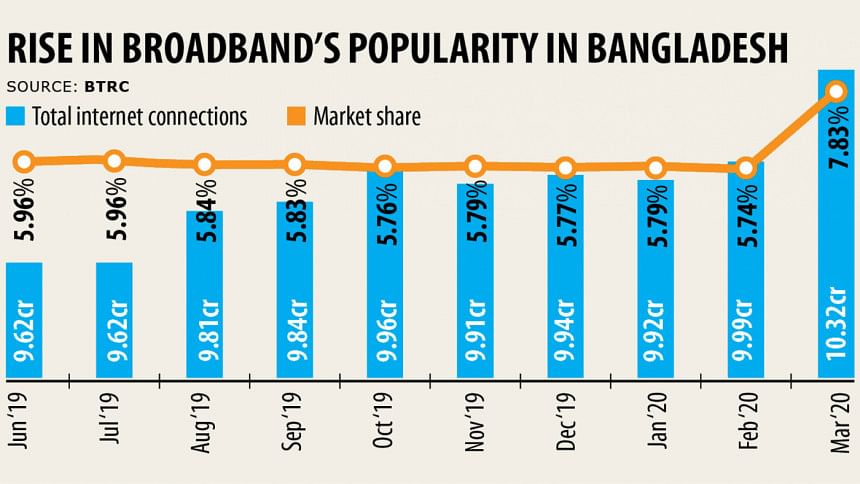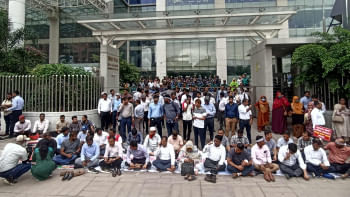March will be viewed as watershed for digital Bangladesh

The pandemic, it seems, was the big bang the digital Bangladesh charge needed to level up.
Holed up in their homes, people turned to the internet for over the last months to work, buy stuff, for entertainment and lessons.
The spike in activities boosted the consumption of international internet bandwidth.
A good number of the people who have locked themselves after the first coronavirus cases were reported in Bangladesh on March 8 have connected their homes with broadband internet for faster and more economical internet connection.
And many of them were using the internet before but by way of mobile data.
In the last few weeks, sector leaders said that people are using more digital services than ever before and consuming the highest level of internet bandwidth in their life. But there had been no exact numbers.
The picture became clearer yesterday when the Bangladesh Telecommunication Regulatory Commission (BTRC) published its latest report on the country's telecom sector.
It showed broadband connections rose 31.10 per cent in March from the previous month to 80.84 lakh.
Active internet connections crossed a milestone of 10 crore users, reaching 10.33 crore in March in total.
There are not many countries in the world that can pride themselves on having 10 crore active internet connections.
It is true that 10 crore active connections don't mean that 10 crore users are actively using it, but still, this is not a minor achievement for a country like Bangladesh.
So, the third month of 2020 will be remembered as a watershed moment for the digital Bangladesh agenda.
Historically, Bangladesh is a mobile internet-dominated market but broadband is the real internet for carrying out high volume work.
Even one can find fixed broadband connections at the residences of senior executives of mobile operators. It doesn't mean that mobile internet is bad; it is just that broadband feels more solid in hand.
I personally helped three of my friends and colleagues to get broadband connections during the pandemic. These people predominantly relied on mobile internet when at home. But when the issue came to a home office, they decided to get a broadband connection without a second thought.
There are other internet users who had not taken broadband connections at home but the changing situation has prompted them to change the way they had looked at it and have now made the plunge.
Thanks to their inclusion, Bangladesh was able to add 23.41 lakh new connections to broadband internet network in March alone.
This is also a very good news just before the World Telecommunication Day to be observed on May 17 across the globe.
Every year, the International Telecommunication Union, the international agencies and a good number of digital service and internet-related bodies and firms publish rankings and Bangladesh always lags only because of fixed broadband connectivity though we have excellent performance in other areas.
The achievement in March might not be incorporated in the coming rankings but it will surely be reflected in the studies for 2020 and Bangladesh's position will go up.
This is because the rankings are largely titled towards fixed broadband.
In terms of bandwidth use, broadband users are consuming a few times higher bandwidth than mobile internet users do.
With less than one crore active connections in the broadband segment, they are consuming about 70 per cent of the country's total bandwidth.
During the shutdown, mobile operators' bandwidth use increased 20 per cent, while it is 30 per cent for broadband.
Soon after the BTRC published the report, I talked to some industry leaders and they shared another insight.
They said the broadband industry has about one crore connections, not 80.84 lakh, because not all of them are reported as individual connections though their consumption is counted.
To conclude, I must say that Bangladesh is moving towards digitalisation as a nation and we are moving in the right direction in terms of digital service acceptability although some challenges exist.
If the government and regulators address the challenges, it will catalyse the industry to move faster than ever.

 For all latest news, follow The Daily Star's Google News channel.
For all latest news, follow The Daily Star's Google News channel. 



Comments